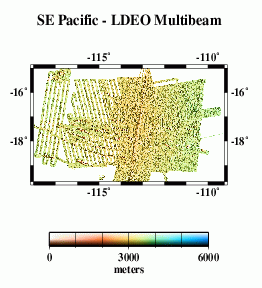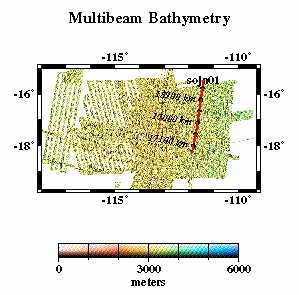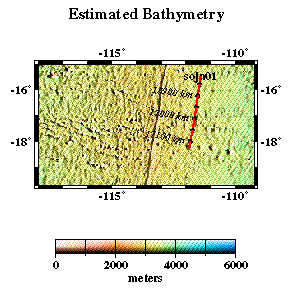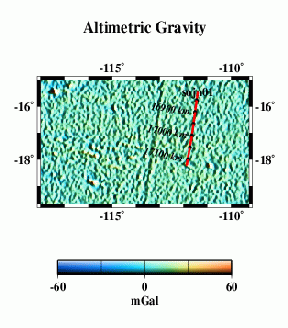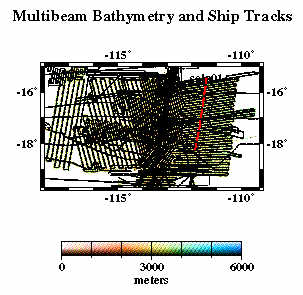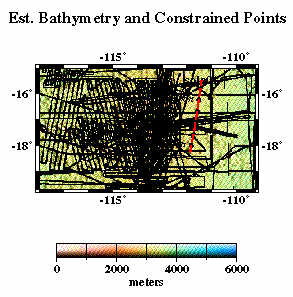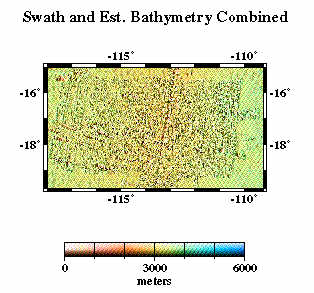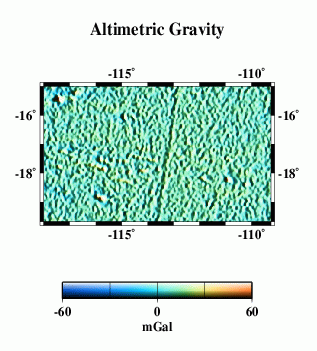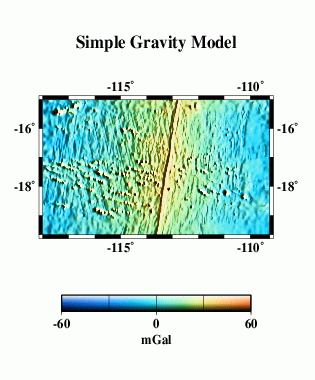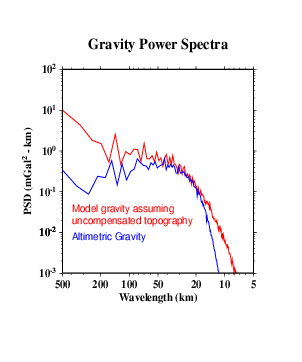Profile Comparisons
Here we compare profiles from swath bathymetry (A) with estimated bathymetry
(B), and satellite-derived gravity anomalies (C). Because there are limited
constrainted points (black dots in E) in the estimated bathymetry along the
profile (red line), and because of the resolution limit of the altimeter data
used in the bathymetry prediction, the estimated anomalies do not resolve short-
wavelength seafloor features evident in swath bathymetry (F).
| G |
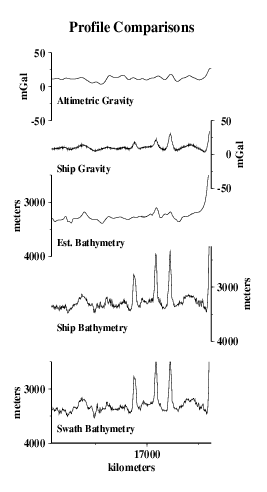 |
Grid Analysis
We compare the difference between altimetry-estimated bathymetry (2 min.
grid) and actual swath bathymetry (.002 deg. grid) two ways, because the two are
on grids of different spacing and thus may capture different length scales of
bathymetric roughness.
For the lower-resolution analysis (H and I), multibeam data were averaged into
corresponding 2-arc-minute blocks, and estimated bathymetry was subtracted.
For the higher-resolution analysis (J and K), bilinear interpolation was used to obtain
estimated bathymetry values at each point on the swath bathymetry grid,
then the estimated bathymetry was subtracted.
In both cases, we find the mean difference is ~ 35 m (the swath bathymetry data are
systematically shallower); the difference is about .01% of the depth. An error like this
is expected because of the uncertainties in whether or not data sets used in calibration
have been corrected for the variable speed of sound in seawater, errors translating
uncorrected sound speeds between nominal fathoms and nominal meters, etc.
The standard deviations about the mean are 79 m for the 2 arcmin averages and
90 m for the multibeam points. Since 90² - 79² ~= 43²,
We may assume that the root-mean-square (rms) average rounghness captured by the
multibeam and not capturable on a 2 arcmin grid is about 43 m. The rms difference
at longer scales, 90 m, is due to incomplete information in the estimated
bathymetry grid.
| H |
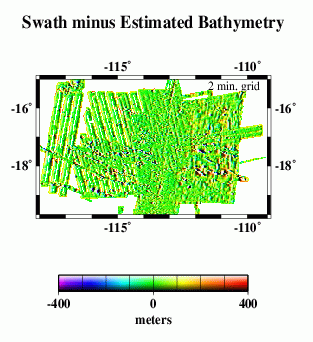 |
I |
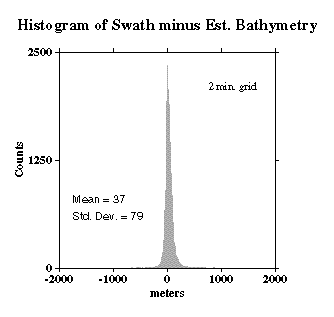 |
| J |
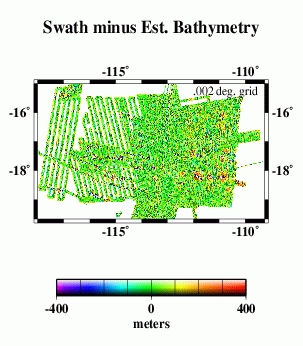 |
K |
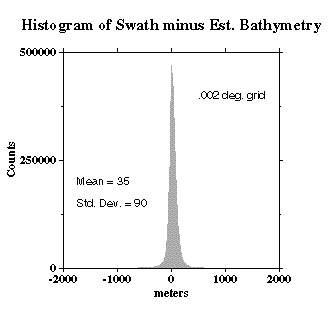 |
Eventually, we want to do a detailed cross-spectral analysis to determine how much of the
actual multibeam bathymetry is captured in the altimeter gravity field. Here, we present
a very simplified model. We talke the combined bathymetry (F) and simply calculate a
model gravity field, assuming that all the topography has the same density and is entirely
uncompensated. This model (M) does not look much like the observed gravity (L),
because our assumptions are too simple. The radially-averaged power spectra of the two
(N) give some clue as to why.
At wavelengths longer than ~150 km or so, the simple model has too much
power, because it does not include the effects of isostatic compensation of the
topography. At shorter wavelengths the model has more power than the altimetric
gravity. Some of this difference is due to smoothing in the altimeter data
necessary to remove noise. However, we don't know whether the simple model is
realistic at these wavelengths. We need high- quality ship gravity data to
compare.

